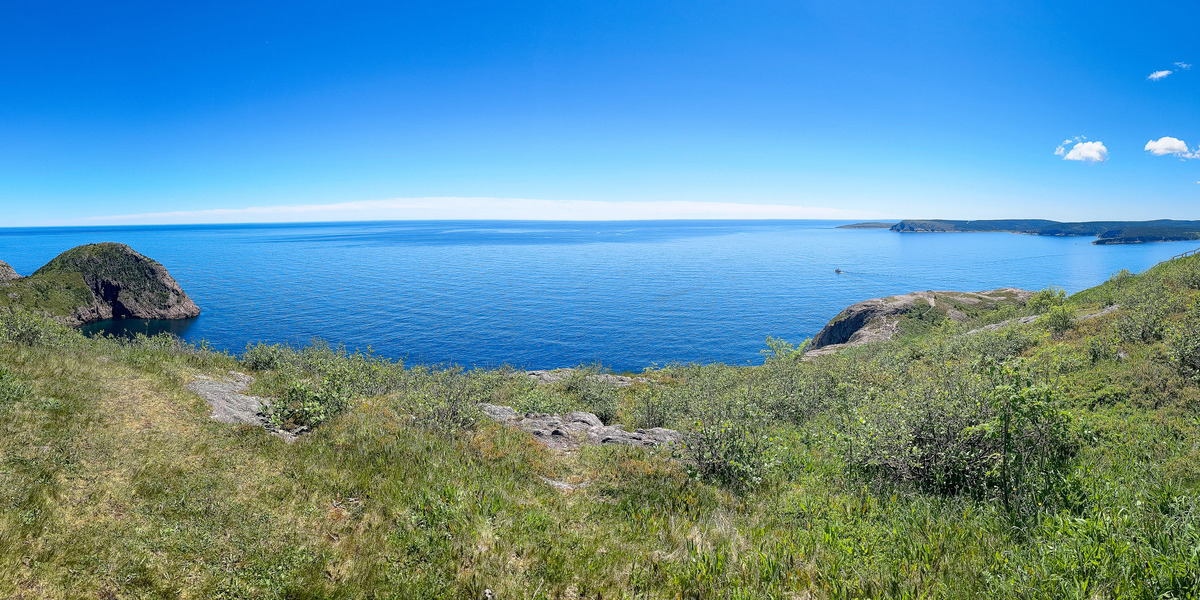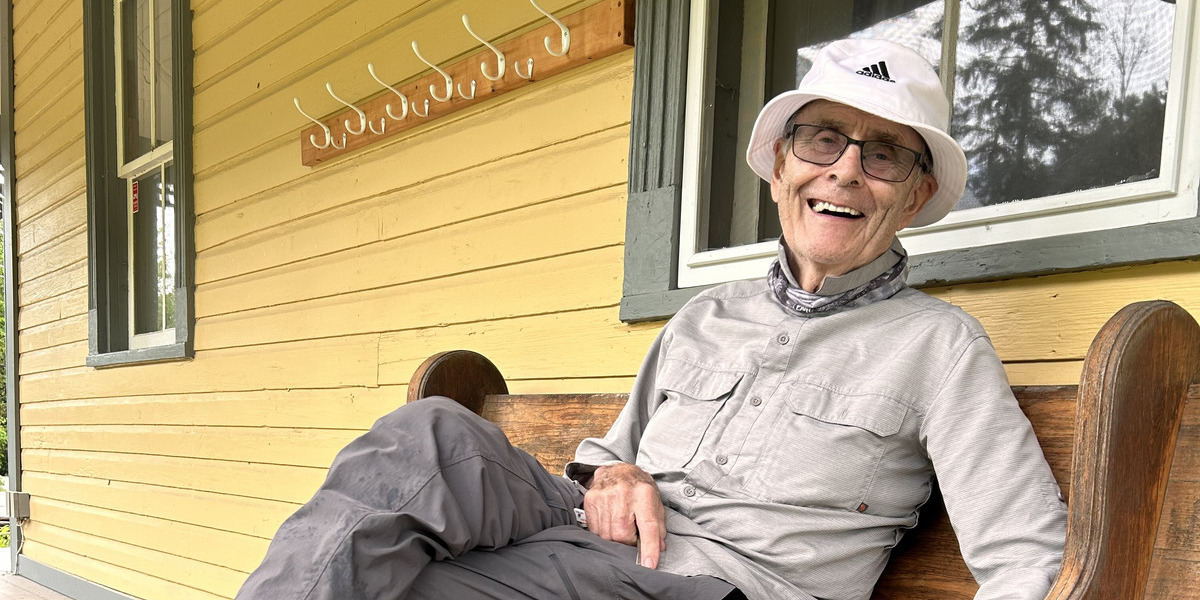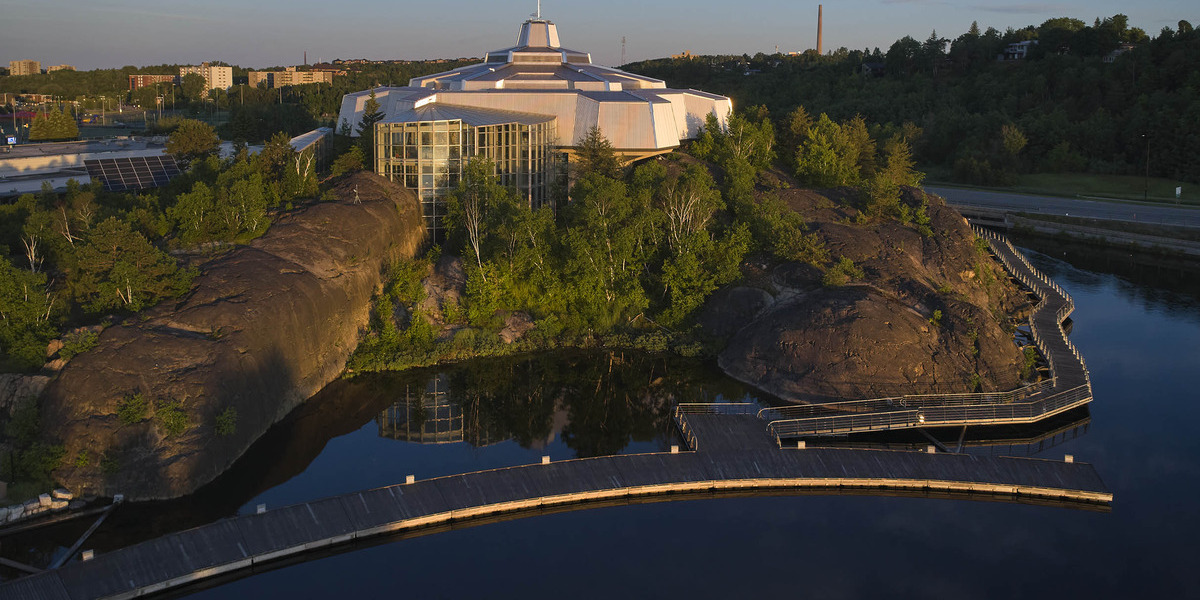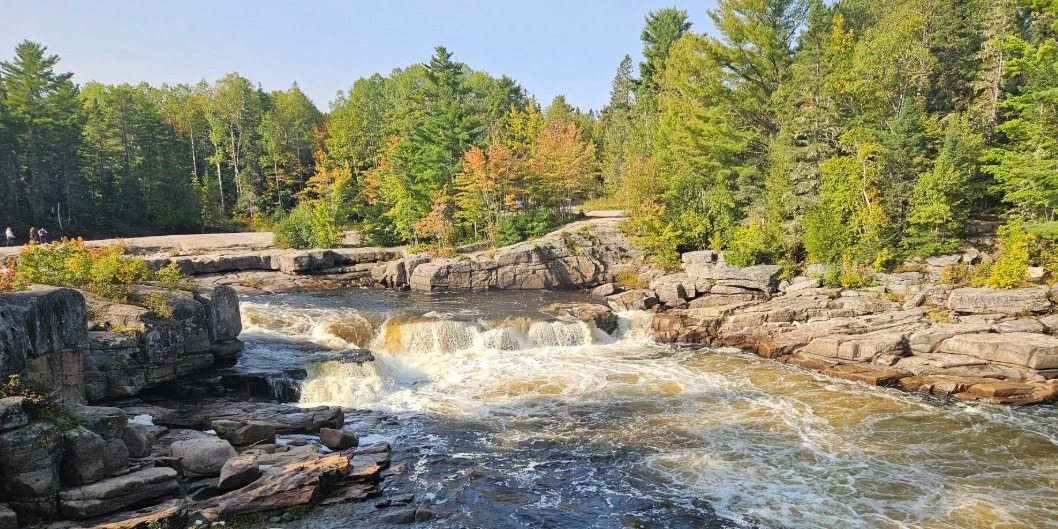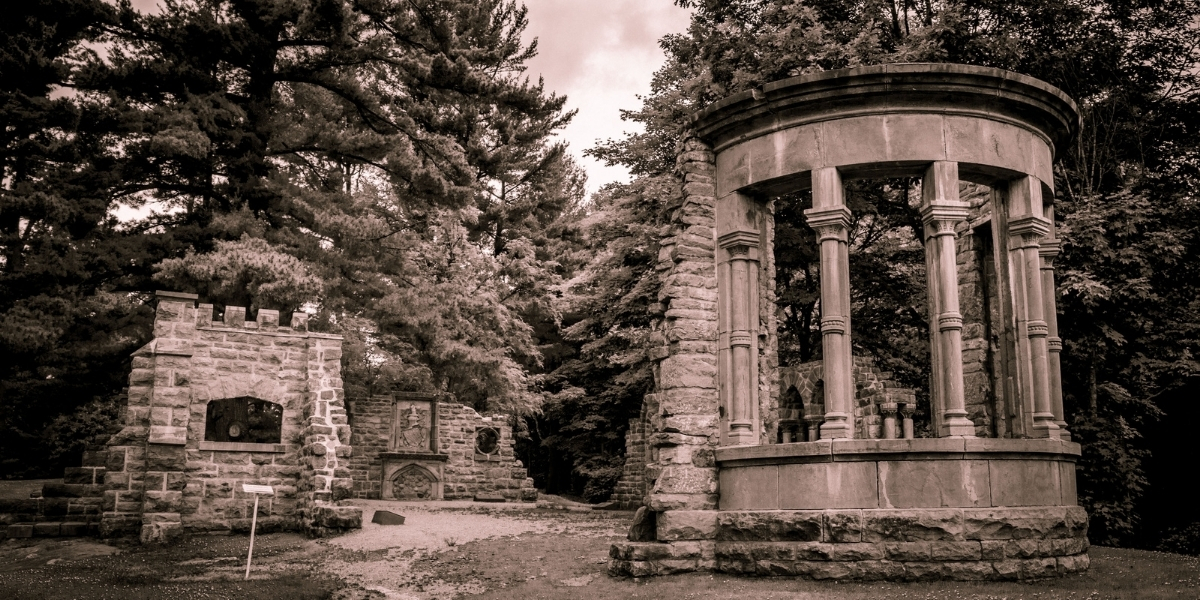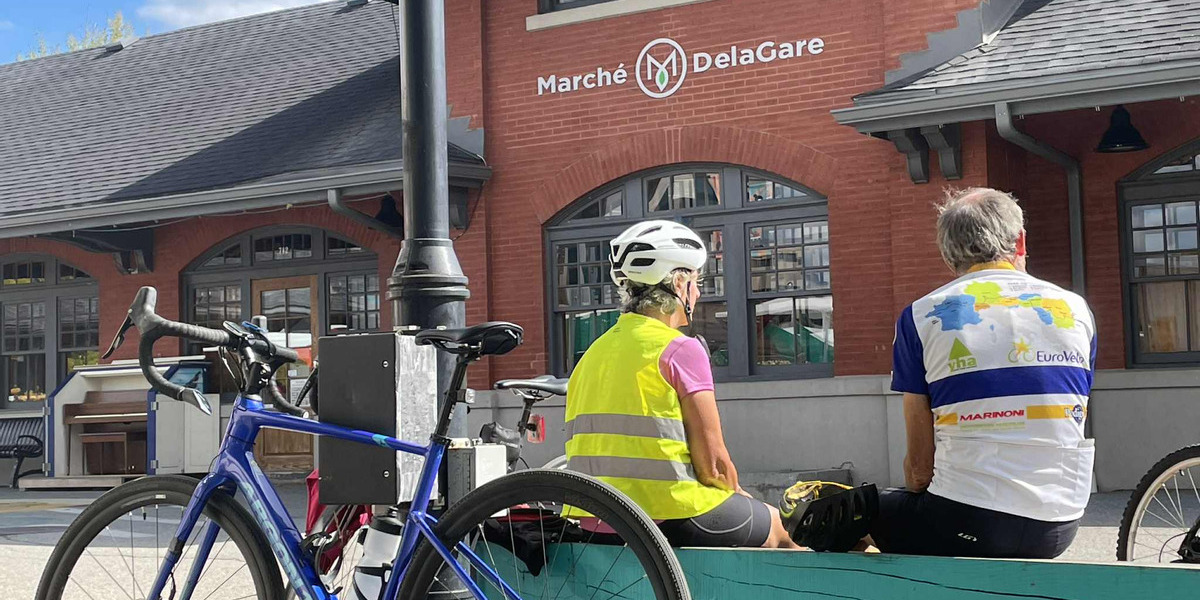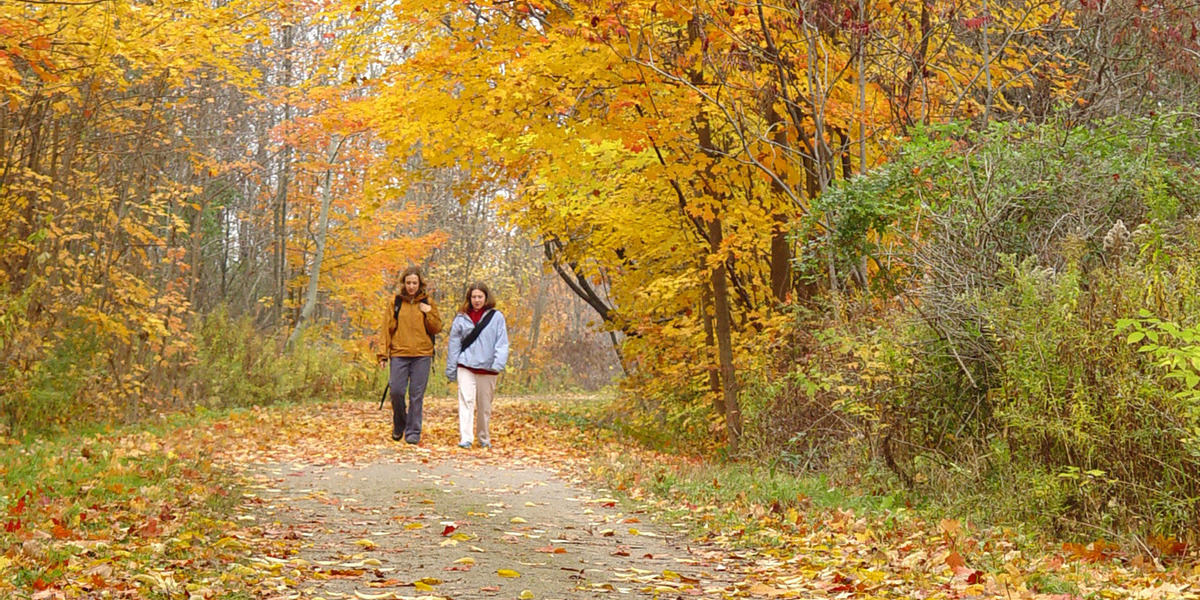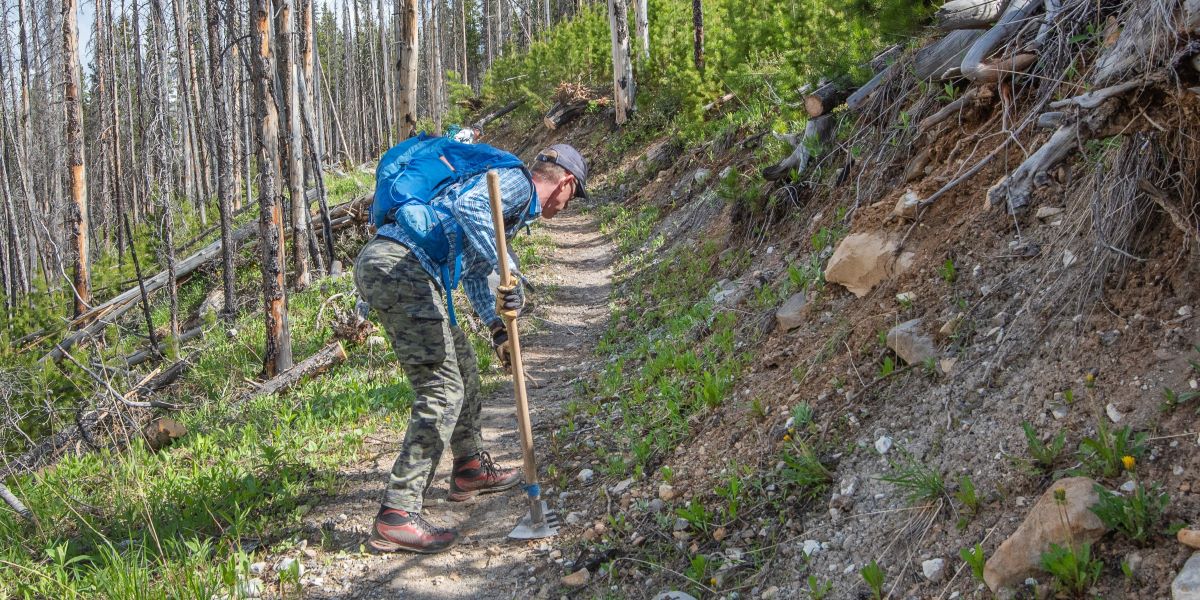Cathy’s Trans Canada Trail: East Blow Me Down: Awe-Inspiring Hiking
Written by Cathy Donaldson
Every so often, a hike gives you so much more than fresh air and exercise. It leaves you emotionally stirred by the sheer beauty of a place that feels almost untouched. That’s exactly what I experienced on the East Blow Me Down Trail, one of the newest additions to the Trans Canada Trail system.
This rugged, four-kilometre backcountry route is tucked into the Blow Me Down Mountains overlooking the Bay of Islands in western Newfoundland. The trail impresses with its sweeping views, rare geology and an unforgettable sense of remoteness. It was a highlight of my return to this part of the province after three decades away.
The East Blow Me Down Trailhead marks the start of a moderately challenging four-kilometre route into the Blow Me Down Mountains — one of the newest additions to the Trans Canada Trail network. Photo credit: Cathy Donaldson
A guide with deep roots
I’m fortunate to hike the East Blow Me Down Trail with Rob Thomas, whose passion for the outdoors is contagious. By day, Rob works with the Newfoundland and Labrador Indigenous Tourism Association. And, in Benoit’s Cove, he co-owns the Saltbox Restaurant as well as Everoutdoor Adventures — a guiding company in the same building that offers hiking and zodiac tours. Rob also serves as Vice Chair of Cabox Geopark Inc. and sits on the Trans Canada Trail’s Indigenous Advisory Committee.
Joining us on the hike were Glen Keeling, Manager of Outdoor Operations at Everoutdoor Adventures, and Indigenous Interpreter Kevin Barnes, a member of the Qalipu First Nation.
During the afternoon, Rob tells me about the Cabox Aspiring Geopark, a grassroots initiative seeking UNESCO Global Geopark designation for a 2,500-square-kilometre swath of western Newfoundland. The proposed Geopark includes the Blow Me Down Mountains, the Humber Valley, the Lewis Hills and North Arm Hills. Together, the landscapes tell a story of ancient oceans, colliding continents and geological upheaval on a staggering scale.
“Every step out here is like walking across a page of Earth’s history,” Rob explains as we set off. With each kilometre, I began to understand what he meant.
Emerging from the forest, our group descends the rocky path towards the open alpine bowl. Photo credit: Cathy Donaldson
Into the backcountry
The trailhead begins in forested lowlands, but before long, the path emerges into an open alpine valley. Scattered boulders left behind by retreating glaciers give perspective on the incredible forces that shaped this place.
As we hike deeper into the valley, it strikes me how raw and unspoiled the area feels, aside from the hauled-in crushed stone beneath my boots.
Now and then, a faint birdcall can be heard. Other than those occasional sounds and our own bursts of chatter, the valley is immensely peaceful, especially when we reach the current end of the East Blow Me Down Trail.
A picnic table — courtesy of Trans Canada Trail — offers hikers a perfect mid-route perch to rest and take in the sweeping views below. Photo credit: Cathy Donaldson
Mesmerized by the summit views
Hands on hips, I let out an audible gasp as I stand by the stream at the trail’s turnaround point. Beyond it, mountains rise sharply in the distance, their summits taking my breath away. I’m reminded of the orange-tinged Tablelands of Gros Morne National Park, which I’d hiked a few days earlier.
“It’s very similar to the Tablelands but not developed,” Rob explains. “I would like to see it as busy as Gros Morne. The data is showing us that a lot of the Gros Morne visitors are one-time park users. We need to give them a reason to stay longer. Come to Gros Morne, then come to Bay of Islands.”
Some sections of our trek are a real workout for my 50+ knees (I’m thankful for my poles more than once), but the effort pays off, each turn revealing another view — a glacier-carved valley stretching into the distance, a gentle stream cutting through the rocks, or a wind-gnarled tree clinging to a bank.
A trail with meaning
The East Blow Me Down Trail is more than a wilderness path — it represents a community-driven addition to the Trans Canada Trail, linking western Newfoundland to a national network that connects people and places across the country. Interpretive panels along the way highlight the region’s remarkable geology and the local efforts that made the trail possible.
The International Appalachian Trail Newfoundland and Labrador (IATNL) played a leading role in establishing this section. The project was championed by many partners, including the Town of Humber Arm South, Qalipu First Nation and Elmastukwek First Nation, as well as the Saltbox Restaurant and Everoutdoor Adventures. Their shared vision ties this local trail to a much larger story — one rooted in the dramatic geology of western Newfoundland and centred on Cabox, the island’s highest peak.
At the current end of the trail, rust-coloured rocks (peridotite) and winding streams cut through terrain where the Earth’s mantle — once buried beneath the ocean — now lies exposed on the surface. Photo credit: Cathy Donaldson
The Cabox connection
The proposed Geopark takes its name from Cabox, the highest peak on the island of Newfoundland at 814 metres (2,670 ft). Located in the Lewis Hills, Cabox is part of the Bay of Islands Ophiolites, formations dating back to the closing of the Iapetus Ocean and the rise of the Appalachian-Caledonian Mountains. Often called the “Galapagos of Plate Tectonics,” the region played a key role in confirming the theory in the 1960s and 70s.
Like the famous Tablelands in Gros Morne National Park, the Blow Me Down Mountains expose slices of Earth’s mantle rock — material usually hidden deep below the surface. But here, amid the solitude, the geology is more than science: it’s a backdrop to human stories that stretch back for generations.
Hiking the East Blow Me Down Trail felt like stepping into those stories — not only into Earth’s deep past, but also into the lives of the people who have long known these valleys. Indigenous peoples travelled and lived on this land long before settlers carved out livelihoods in nearby coves and communities. Today, hikers like me arrive with boots and backpacks, drawn by the promise of beauty and meaning.
What makes this trail unique is how it weaves together geology, history, culture and conservation. It’s not just about scenery; it’s about connection — to Cabox and the ancient forces that shaped it, to the communities who built and now steward the trail, and to the people who continue to find meaning here.
The East Blow Me Down Trail may be only four kilometres long, but it stands as a powerful new link in the Trans Canada Trail system — an experience that lingers long after the last step.
Local partners and trail advocates pause at an interpretive panel overlooking the East Blow Me Down Valley — a key part of the proposed Cabox Aspiring Geopark. From left to right: Indigenous Interpreter Kevin Barnes, a member of the Qalipu First Nation; Rob Thomas, Vice Chair of Cabox Geopark Inc. and member of the Trans Canada Trail’s Indigenous Advisory Committee; and Glen Keeling, Manager of Outdoor Operations at Everoutdoor Adventures. Photo credit: Cathy Donaldson
+++
Cathy Donaldson is a travel and lifestyle writer based in Moncton, New Brunswick (in green shirt, front row, last photo). Read more about her adventures at:
• Website: www.cathydonaldson.ca
• Blog (“Midlife Report”): https://www.cathydonaldson.ca/midlife-report
• Facebook: https://www.facebook.com/cathy.k.donaldson
• Instagram : @cathykdonaldson
• LinkedIn : @cathydonaldson
• Threads : @cathykdonaldson
Read more about the East Blow Me Down Trail here and subscribe to Trail Talk for more great stories.
Main photo credit: Cathy Donaldson


